
Nina Simons is the co-founder of Bioneers, a gathering of social and scientific innovators that focuses on furthering a cooperative global culture while fostering sustainability and collaboration.
Zoe Krasney: Am I using the correct term when I say “eco-feminism?”
Nina Simons: I think that’s a really great question. Actually, it gives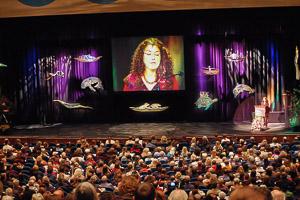
I had a feeling that is what you intended, not to use the term feminism to create more separation, given we do so well with separation already.
One thing that I learned during my 23 years at Bioneers is that regardless of your age, your ethnicity, your gender or sexual orientation, everyone has something meaningful and needed to contribute. That is the great work of this time as far as I am concerned. Everyone is needed. It is kind of an all-hands-on-deck moment.
And being careful of language, like using the word patriarchy. It is very charged, even though it has tremendous meaning historically.
Exactly, and I try to avoid it. I prefer to talk about a bias toward the masculine. One of my favorite metaphors comes from a book by Melissa Harris-Perry. She’s an African-American commentator on progressive television. She wrote a book called Sister Citizen, which talks about being an African-American woman in this culture and defying stereotypes. I found her message compelling, not only in terms of race equity but in terms of gender equity, in which she talks about a “tilted room.” She refers to an experiment that happened in the 1970s in which social scientists took a linear room and they tilted it, as much as 30 degrees. One by one, they invited all kinds of individuals into this room where there was a table and a chair, probably nailed to the floor. What they found was in 100 percent of their subjects, the people that entered this room assumed that the room was right and they were wrong. So they tried to correct their posture to compensate for the tilt. I found that an incredibly powerful metaphor because it speaks to the way that white privilege has been established endemically within our culture, and that as I believe, gender bias and privilege have become embedded, insidiously invisible in our culture. So in lieu of using the word patriarchy, I like to talk about how we step out of this tilted room. Because the interesting thing about the tilted room is whether you’re on the side of the room that benefits from the tilt or on the side that is damaged by it. Either way, you’re negatively affected by the tilt.
Do you see women’s role in the environmental movement as a polarity or a complement to what is happening now in the discourse? Why is it that men rise to dominate most environmental organizations?

I didn’t realize it went on for that long.
Depending on which historian you believe (and they vary widely), somewhere between 50,000 and seven to nine million women were tortured and burned during that time. There were men that were tortured and burned, too, of course, and as I researched further, what I found fascinating was that there were institutions that transitioned from one domain to the other during this time. For example, land use transitioned from the commons, which traditional villages accessed to share land use, to grow and pasture their livestock, to what was called the enclosure system, where much of the land was privatized. Suddenly, the common land wasn’t in common use. And medicine. In the beginning, there were shamans and midwives and healers working with those who transitioned at the end of life. By the end of the burning times, a person had to attend medical school to practice medicine, and only men were allowed in medical school. Of course, the female healers and midwives were among the first to be killed. The whole practice of medicine shifted, and there was a tremendous transfer of wealth into the hands of a few people. So what I came to see was that all the environmental issues were linked to the social issues I had been learning about through Bioneers. I began to see through the lens of the imbalance of the masculine and the feminine, which was not only about people having access to power and leadership but also about those human qualities that over time we ascribed to the masculine and the feminine and how we have elevated those associated with the masculine and devalued those associated with the feminine. I believe we all have deeply ingrained an almost invisible bias. That bias manifests in our institutions and in our culture.
I see not only devaluing but actively fearing the feminine in our culture, fearing something about what that represents.
We have an acculturated and deeply embedded fear of the feminine and the archetypal qualities associated with it, like certainty or intuition. Also, I think it may go a long way toward explaining our trepidation about naming the sacred.
Should we be talking about the sacred in relation to the natural world?
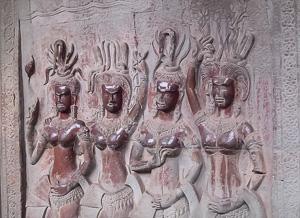
Why is it that so many contemporary environmental organizations never go there, never go to that place that I think really attracts us to want to do that work? Why do they stay away from the word “sacred?”
I can’t pretend to know the answer to that, so I can only answer you from my guesswork and my person. My guess is that we are all caught up in a culture that is deeply invested in separation. The truth of our lives, I believe, is far more systemic and integrated than our culture would have us believe. For instance, for an environmental organization to talk fluently about the sacred would invoke the tricky terrain of religion. And I think in our culture we have unfortunately conflated the sacred with religion. For me, personally, the sacred is much more than religion. It involves what native peoples have known for thousands of years: What has informed their ecological management and relationship to the natural world is that they see everything as connected. Invoking the sacred is very powerful and very needed, and my guess is that people avoid it partly because it is seen as “wu-wu,” or ungrounded, or perhaps stepping too near the third rail of religion, which is such a polarizing topic.
I noticed when you were talking about history you didn’t mention religion.
It was the rise of Christianity and its overarching principles that was used to suppress women. On a Bioneers radio show with Gloria Steinem, she pointed out that the design of churches, especially the sanctuary, is modeled after a woman’s body. She talked about how the nave and the pews mimic the ovaries and fallopian tubes. Really it was the Church that embodied masculine bias. That was the entire underpinning of the structural justification for the burning times.
Does it fit in now to ask the question: Does a woman’s connection to her own body connect her deeply to the body of the planet? We talked about the masculine and the feminine within each person, and yet there is something very primal about a woman’s body and her connection to cycles, seasons, water.
I think about Susan Griffin’s book Women and Nature because she actually articulates in a very poetic way the relationship between a woman’s body and nature and history. On the most fundamental physical level I think women’s monthly cycles connect us to the moon, to the tides, to each other. Many of us have experienced how when we women come together, we often influence each other’s cycles. Many women in one place will start to bleed at the same time. And similarly, when I was menstruating, I found that I was really most in sync with my body, feeling my own connection to life, and my period would coincide with the full moon. And of course the moon influences the tides, so in a very physical sense I think the human body has a relationship with cycles, and it’s very interesting to me that in many indigenous traditions, the earth is referred to as our mother. We share a propensity and awareness about fertility, of which we are all a part. I believe women carry that in our bodies in a different way than men ever could because of our biology. Of course, what science is now discovering is that our biology isn’t only a matter of having a different reproductive system. We also, of course, have different hormonal washes and reactions and even perhaps some brain differences.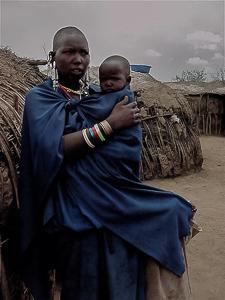
One of the studies I find particularly interesting about women’s capacity for relational or more systemic thinking comes from a study that was done at UCLA (University of California, Los Angeles) in the early 90s. It studied how men and women respond differently to stress. What they found was that in an office environment when men felt stressed, they typically responded with a fight-or-flight array of options. They would either become aggressive or withdraw and go into their office and close the door, choosing to be alone when they were stressed. Women, on the other hand, did something very different when they were stressed. They gathered around the water cooler, they talked to each other, they connected. And by connecting with each other, their bodies released oxytocin, which is a hormone our bodies release when we are making love and also when we are mothers and a baby calls for its milk. The oxytocin released actually restores our nervous system to equilibrium. They came to call that the tend and befriend system because women tend to veer toward connection while men tend to veer toward isolation. For me, that’s a different kind of tie-in, how women’s connections to our bodies connect us to the body of the planet. The other thing that I’ve been thinking about recently is the way we have devalued our bodies based on cultural messages. Every time I pick up a women’s magazine I can’t go more than five or 10 pages before I have smoke coming out my ears.
What in particular?
It’s the messages and the constant reminders of what women’s idealized bodies are supposed to be, and how our bodies, as they currently are, are never enough. They’re never thin enough, they’re never young enough – you know, the models who are size four and are bulimic are our role models. It’s very rare to see a woman over 50 other than Meryl Streep in a magazine, or even on television or in the movies. We have an incredible lack of diverse role models, diverse in terms of age and ethnicity, body size and shape. And the degree to which we women are encouraged to have surgery, use makeup, dye our hair, because who we are naturally is never seen as enough. So there is tremendous violence perpetrated on our relationship to our bodies. We are a product of this culture. I believe that that mirrors our relationship to the earth. The way that we have systematically defiled the natural world, mistreated, taken resources from the earth, we erroneously believe that she can recover from anything we do to her. And of course we know as environmentalists that she can’t. She can in the long run – it becomes an interesting question of time. I think no matter what we do, the Earth will survive. It may take her millions or billions of years to recover. I actually believe the question for environmentalists is, how do we promote the quality of life on earth? It is more about humans, really, than the earth itself.
What do you mean by that?
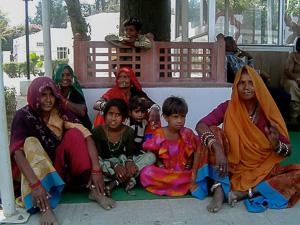
Conflict over water, land, over the resources that we take for granted?
Absolutely. It’s been a painful awakening for me as a dyed-in-the-wool optimist, to recognize the inevitability of what is coming. And how much and how rapidly we are already losing extraordinary species and extraordinary amounts of resilience. So in a way, what I imagine is that the environmental movement has largely failed and for several reasons. One of the reasons is that as a movement, it has focused narrowly on the natural world without adequate focus on the impact of our behavior on it, our families, our children, and our grandchildren. The fact is that every baby born on this planet now has a minimum of something like 280 exogenous chemicals in its bloodstream and in its umbilical cord. It’s beyond horrifying, due for tremendous outrage, but I think most people don’t know that, because the environmental movement has been focused on spotted owls, to its own detriment. In the movement’s history, there has been a kind of us-versus-them mentality and a furtherance of that sense of separation that so permeates our culture. Environmental degradation is our degradation. One of things I think is so problematic about the environmental movement is that it has not adequately informed people about the deleterious effects of environmental degradation on human life. Another reason I think that the environmental movement has been so flawed, or has not been more effective over time, is the political landscape in which we live and the framing that the environmental movement has tended to use, which has been a framing around urgency, self-righteousness, and the public being under-informed. I personally have come to believe that a positive vision of the future we can achieve together would be much more compelling than fear-mongering, ranting, and putting people down.
What would that vision look like, and how can it be conveyed in a way that doesn’t separate people? 
I recently read a critique of the climate change movement and the kind of framing that the climate change advocates have been using. A lot of what they said was that there were three pillars to that story. One was urgency; one was lack of education; and one was lack of government action. What this person was saying was actually that there is a lot to celebrate about what has been happening if you look at it at a global level. There have been very significant advances in automobile technology and the number of hybrid cars in the United States and various industrialized nations around the world, and this is an extraordinary sign of success. The cost of solar and wind energy, as well as the efficiency of those technologies, has been improving at a very dramatic rate. If you look at a country like Germany that sets a very high goal for renewables and has been surpassing even the goals that they set for themselves, there is the possibility that market changes may drive the shift to renewables. That’s a story that everyone could get behind, because the shift to renewables is what’s going to create jobs, what’s going to heal economies, and what’s going to simultaneously help heal the weather, restore the weather. Another thing that this analyst was suggesting was that three-quarters of the American public now believes that weather instability is a significant problem. More than two-thirds of the American public are now fully in favor of government taking measures to help stabilize the climate. So while there may be polarization around whether or not people believe in human-created climate change, there is much less polarization around helping restore balance to the weather. So let’s just throw out the old terminology. It doesn’t work. One of the things I noticed in the early years of the Bioneers was that we had dreams of affecting our environmental education in the media and in the stories of Bioneers. But we didn’t have money to really do it. And so we attended a couple of education conferences – and the most horrifying thing that we observed there, which is why I believe we have so many climate change deniers now in our country, was that among the very best-funded education programs at those conferences in the early 90s were environmental education programs that were funded entirely by the multi-national corporations doing extractive mining. Oil and gas companies and the coal companies were the ones that created environmental curriculum and distributed them very widely throughout the 90s because the environmental movement didn’t have the resources to present a countervailing story.
Insidious and smart.
We are living with the legacy of that now. That’s why we have so many climate deniers. They learned it in school.
Everything you say is so rich and thoughtful. Is there anything you can say to sum up, or to bring some of the threads together? We started off by talking about accessing the feminine in all of us, male and female. So a question I ask you, is, how will incorporating that feminine aspect help heal our collective wounds and bring us to that shared vision?
Why don’t I weave this together a little bit, how women’s leadership will help heal our collective wounds and maybe cite some examples, through thinkers and writers who have influenced me. The ones I would have to name first are Terry Tempest Williams, Alice Walker, Susan Griffin, Gloria Steinem, Joanna Macy. These are women who became mentors to me long before I ever met them. One of the things I learned from them was that I could find mentors in the form of writers I didn’t personally know, because their ways of thinking and writing could enter me without it necessarily becoming a personal relationship. Terry Tempest Williams was probably the profoundest influence on my thinking because she taught me it was possible to weave together themes and ideas, questions and realities that I had never seen woven together in a literary way before. She modeled for me that it was possible to be a naturalist, deep lover of human beings, a woman, and someone who was deeply concerned about issues of spirituality and the sacred and healing, all at once. My experience of her writings is that she has created new forms in almost every book she has written. The freedom with which she allows herself to weave all those worlds is incredibly liberating. Alice Walker was among my first experiences of magical realism, and what I learned from Walker was that it was possible to write about and articulate invisible worlds as well as the visible world. Her capacity to liberate her own voice, thinking about those things and writing about them, helped me to unleash my own voice. She also has that beautiful connection to animals and nature, and again I experienced her as a weaver of worlds. This may be true of all of them. Susan Griffin has been a mentor to me not only because she created new forms in her writing, but because of her particular ability to write about something as “squishy” as women’s relationships to the natural world, women, and nature. There is a book of her essays that articulates some of these gender issues that I have been grappling with for so many years, so exquisitely.
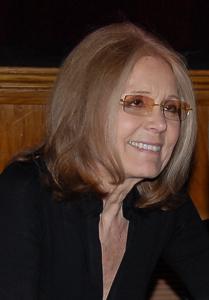
Joanna Macy is a Buddhist scholar and teacher who has done a lot of work around reframing our relationship to the living world. She is a brilliant, wise educator and mentor.
There’s also a writer who has been really important to me recently named Sally Roesch Wagner. She is a little-known feminist scholar whose work is largely based around the fact that much of the early environmental movement was informed by the feminist movement in Upstate New York, observing and learning from the gender relations in the Iroquois and Haudenosaunee cultures. Native peoples were really the example from which early feminists took heart and really informed their vision of an egalitarian gender structure. There are many great feminist writers. I’m a voracious reader.
So I’m going to approach your question, “How will women’s leadership help heal our collective wounds?” There is great complexity to this question, because, as many native cultures know, healing often involves a journey into the pain or death of the collective. One of the guiding principles for me for a long time has been a quote by Fritjof Capra about how we restore eco-literacy to the world. What he says is that the shift to an eco-literate culture, or one in which people know how to live in right relationship to the natural world, involves a shift from a focus on mapping things to a focus on mapping relationships. I have come to understand that as a shift in our culture from prioritizing quantitative accumulation, assessment, to one that is qualitative. Based on studies, women have a proclivity for what I call relational intelligence that includes our body’s intelligence, intelligence of our emotions, and it integrates our intuition and our spiritual awareness. If women have a proclivity for relational intelligence, then perhaps we can help lead that shift toward a greater focus on mapping relationships and a recognition that the relational economy is essential to achieving greater resilience and greater sustainability.
Here is what I hope: I hope that women’s leadership can help heal our culture by redefining what leadership is so that it is not viewed as the top-down purview of the charismatic few, but as something that we are all called to do. We all need collaboration to practice successfully. I also hope that women’s leadership can accelerate the inquiry and new vocabulary and understanding of what a healthy masculine and feminine are, for all of us, so that each and every one of us alive on the planet today can operate from a fully resourced toolkit that includes all of our human capacities and doesn’t unconsciously devalue those that our culture has taught us have greater or lesser merit. I hope that women’s leadership will help us all celebrate the feminine aspect of our humanity, especially as it relates to our capacity to form connections across differences. Whether those differences are generational or political or gender issues, our capacity to move toward what Jeremy Rifkin called an empathic generation may be accelerated by women’s leadership. I certainly hope so.
All photos are copyright protected and may not be used without permission. 1) Nina Simons at Bioneers, photo courtesy of Kevin Krejci. 2) The Indian Gardener, photo courtesy of Kathryn and Jonmikel Pardo. 3) Khmer Dancing Girls, photo courtesy of Kathryn and Jonmikel Pardo. 4) Maasai Woman and Child, photo courtesy of Kathryn and Jonmikel Pardo. 5) Waiting for the Train, photo courtesy of Kathryn and Jonmikel Pardo. 6) Welcome to Bioneers, photo courtesy of Christopher Johnson. 7) Gloria Steinem, photo courtesy of Mindy Kittay.